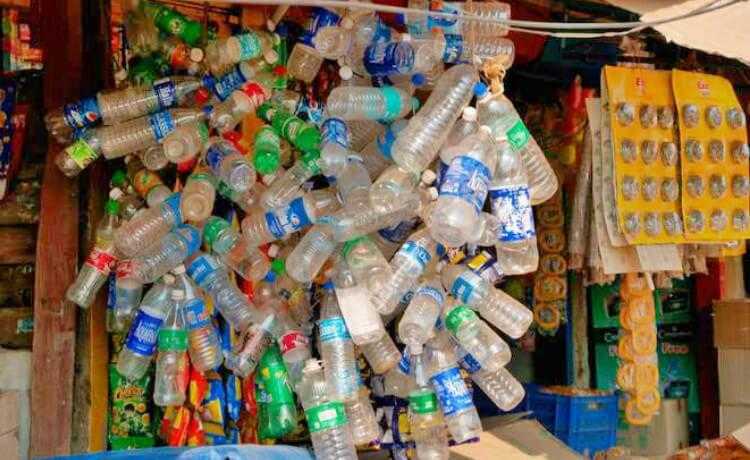Preservatives: what are they, what types and dangers
There are several chemical actions involving preservatives, additives used in foods, medicines and cosmetics

What are preservatives?
Preservatives, in short, are chemical substances (natural or synthetic) added to a product (food, cosmetic, drug...) with the purpose of increasing its useful life, protecting it from bacteria, fungi, yeasts and any other types of organisms or chemical reactions that may make the item unsuitable for use. Most preservatives have bacteriostatic actions, only preventing the growth of microorganisms that can spoil the product; however, some preservatives can have a bactericidal action, killing these microorganisms.
Preservatives can be considered as additives, as the only purpose of the group is to preserve the product, always trying not to change its physical, chemical and nutritional properties (in the case of food). They can be categorized into three types: antimicrobials, antioxidants and enzyme inhibitors.
Types of preservatives
Antimicrobials
They act by inhibiting or killing microorganisms that can alter the quality of the product. Salt is a great example. When meat is salted, the salt (NaCl: sodium chloride) absorbs the water present in the meat and prevents the meat from absorbing moisture from the environment; thus, the microorganisms that can degrade meat do not have the water they need to multiply - which keeps the product preserved for longer. In addition to making water unavailable to microorganisms, sodium chloride absorbs water present in bacteria through osmosis, dehydrating and killing most bacteria.
Antioxidants
As the name suggests, antioxidants prevent the product from oxidizing, from reacting with oxygen. The oxygen present in the air is one of the vital molecules for most living organisms, but this same molecule can “attack” and oxidize materials and products. Just as oxygen oxidizes iron, it can also oxidize apples. You've probably already cut an apple and noticed that after a while its hue was darkened - this is due to the oxidation process of some molecules present in the apple. In addition to the aesthetic factor, the result of some oxidation can alter the quality of the product, spoiling and/or reducing its shelf life. A good example of a widely used antioxidant is ascorbic acid (vitamin C). Try a test: cut an apple in half, apply a few drops of orange or lemon to just one half of the apple. Over time, you'll notice that the half that didn't get the orange or lemon drops will darken more quickly than the half that did.
Enzyme Inhibitors
Some products, especially food, have some enzymes that can accelerate the item's degradation process. An example is the potato, which, like the apple, darkens after being exposed to air. What happens in potatoes is a simple oxidation reaction of a molecule called catechol, which is colorless and, when oxidized, turns into a molecule called benzoquinone, known for its brownish color. It's a simple, slow reaction, but thanks to an enzyme in the potato called catechol oxidase, the reaction happens quickly. And that's why potatoes darken so quickly after being peeled or grated. Preservatives that act as enzyme inhibitors act on enzymes like these, preventing them from speeding up reactions that alter the physical and chemical state of products.
How to identify
Normally, on the packaging of products sold in Brazil, preservatives do not appear with the name in full, but a numbering code, the INS. Our country adopts the International Additive Numbering System (INS), which has all registered additives - but this does not mean that all preservatives present have approved toxicology. To find out which preservatives are present in a product, you should consult the table of codes with the respective additives, available on the website of the National Health Surveillance Agency (Anvisa).
Benefits
The use of preservatives was and is extremely important for the advancement of the human race. Without the use of preservatives, foods and products perish in a few days or hours. The use of preservatives, such as salt in meat, in addition to preserving it for a longer time, prevents contamination of those who will consume the product.
Some contaminants, especially in drugs and foods, can be fatal if consumed, altering not only the physical properties of the product, but producing toxins. Preservatives are used with the purpose of eliminating the presence of compounds and/or harmful microorganisms to the user.
One of the most famous and dangerous diseases for human health is botulism. Clostridium botulinum is the bacterium that produces one of the most potent neurotoxins in the world, which causes botulism. If this neurotoxin is consumed, it can cause paralysis and even death within 24 hours. It is so powerful that it was considered a biological weapon in World War II. Food botulism occurs through the consumption of the toxin already formed in the food, in most cases in canned or homemade foods. A few pounds of this toxin would be enough to kill everyone on the planet.
You can already see that they are important, but not everything is flowers...
Disadvantages
Some preservatives are being linked to diseases and disorders such as autism and obesity. If preservatives are able to interfere and even kill bacteria and other micro-organisms, what might they be able to do within the human organism? Studies on the effects of preservatives on our body must be constant, because as simple as they may be, we are in direct contact with them almost every day.
Preservatives are not only present in food, they are commonly used in pharmaceuticals and cosmetics. In 1999, former surgeon and researcher Andrew Wakefield published a study linking the measles, mumps and rubella vaccine with autism. According to the research, the preservatives present in vaccines, made from mercury, caused autism in children. The study was considered fraudulent, as there was data manipulation; a few years later, it was discovered that the same researcher owned a patent for a vaccine that "would not cause autism."
Even with this case of fraud, it cannot be denied that there is very relevant research being carried out regarding the effects of preservatives on our body, as in addition to ingesting the preservatives daily, they are present in vaccines, injected directly into the body, and in cosmetics , who are in daily contact with our body.
One of the preservatives used to prevent the presence of spores in food is potassium nitrate. The compound is very effective in preventing the bacteria from producing toxins. Clostridium botulinum. When added to food, Potassium Nitrate (KNO3) becomes just nitrate (NO2-), which prevents the bacteria from growing and releasing toxins. The problem is that this compound is strongly related to cancer. When the nitrate present in meat is heated above 100 °C, it reacts and forms nitrosamine, which is a compound considered to be carcinogenic. Potassium nitrate is also used in fertilizers and is one of the three ingredients that make up gunpowder (see our full article on nitrates in processed meats).
Research on artificial preservatives in a variety of processed foods has concluded that this type of additive possibly increases the risk of inflammatory bowel disease, metabolic disorders, and obesity.
Artificial or natural preservatives affect micro-organisms and can also affect human health. The main questions that we get out of all this are: is the damage they bring greater than the contamination caused by the consumption of a spoiled product? What would be the best preservatives or alternatives to prevent a certain product from spoiling or contaminating the user?
Different alternatives for conservation
Preservatives are not human inventions, they exist in nature and are essential for the survival of many types of life. As we have seen, vitamin C is the greatest example of a natural preservative that prevents oxidation, it is very present in citrus fruits and is highly used in the food industry and in cosmetics.
To conserve a product, several techniques can be used - and many of them replace the addition of artificial chemical compounds. Among them are:
Cooling/freezing
When cooling or freezing a product, the water present in the item is less available to the microorganisms present, which thus have their activity reduced - they are "slow" - and the shelf life of the product increases.
Dehydration
As its name suggests, dehydration refers to the removal of water. Most microorganisms need water to survive and multiply. No water, nothing done. An example of a dehydrated product that has its validity much higher than that of a hydrated product is powdered milk.
Dehydration with salt
The use of table salt (sodium chloride) as a preservative in various foods is a very old and very effective technique. Sodium chloride absorbs water from the product and from microorganisms, through osmosis, eliminating these microorganisms and preserving the product. (check out our exclusive article and learn all about salt).
Pasteurization
Technique created by Louis Pasteur, in 1864, consists of a thermal treatment to eliminate microorganisms present in the product, thus increasing its useful life. Although the name “pasteurization” is closely related to milk, this technique was initially used by Louis Pasteur for wine conservation and can be applied to different types of products.
Vacuum sealing or inert atmosphere
Many of the microorganisms present in various products are called aerobic, that is, they “breathe” oxygen to survive. When packaging a product, removing all the air (vacuum sealing) or exchanging the air inside the package for "air" that does not have the presence of oxygen and does not react with the product (inert atmosphere), the growth of micro- organisms present will be prevented or eliminated.
jams
Common in fruit storage, jams are basically made from a sugar solution with the addition of natural preservatives such as cloves. The container is pre-boiled to eliminate possible microorganisms present there, the desired fruit is boiled in a sugar solution and natural preservatives are added. The solution with the fruit is placed inside the container, taking up as much space as possible and avoiding the permanence of air bubbles.
The use of natural sources of preservatives is highly recommended and easily accessible. As well as vitamin C, present in citrus fruits, other compounds with the same antioxidant and preservative action are found in several sources.
- Clove: cloves contain a molecule called eugenol, which has a high antioxidant action.
- Cinnamon : in cinnamon, in addition to eugenol, cinnamaldehyde is present. The compound has aromatic and preservative actions, with fungicidal and insecticidal activity. But it's always good to remember that being natural doesn't necessarily mean being 100% safe. Cinnamon is not recommended for pregnant women as it can have an abortive effect.
Now that you know almost everything about preservatives, time for some fun facts to relax:
Some curiosities
- Packets of snacks and vegetables are filled with nitrogen, forming an inert atmosphere to conserve the product.
- Some wines can have a strong sulfur-like smell. This is because sulfur dioxide is used as a preservative in wines, which can alter the smell and taste.
- The human body produces several types of molecules that are widely used as preservatives in several areas:
- Lysozyme: present in human tears; it is used as a preservative in cheeses and wines;
- Propanic acid: present in sweat; It is used as a preservative in breads to prevent mold.










